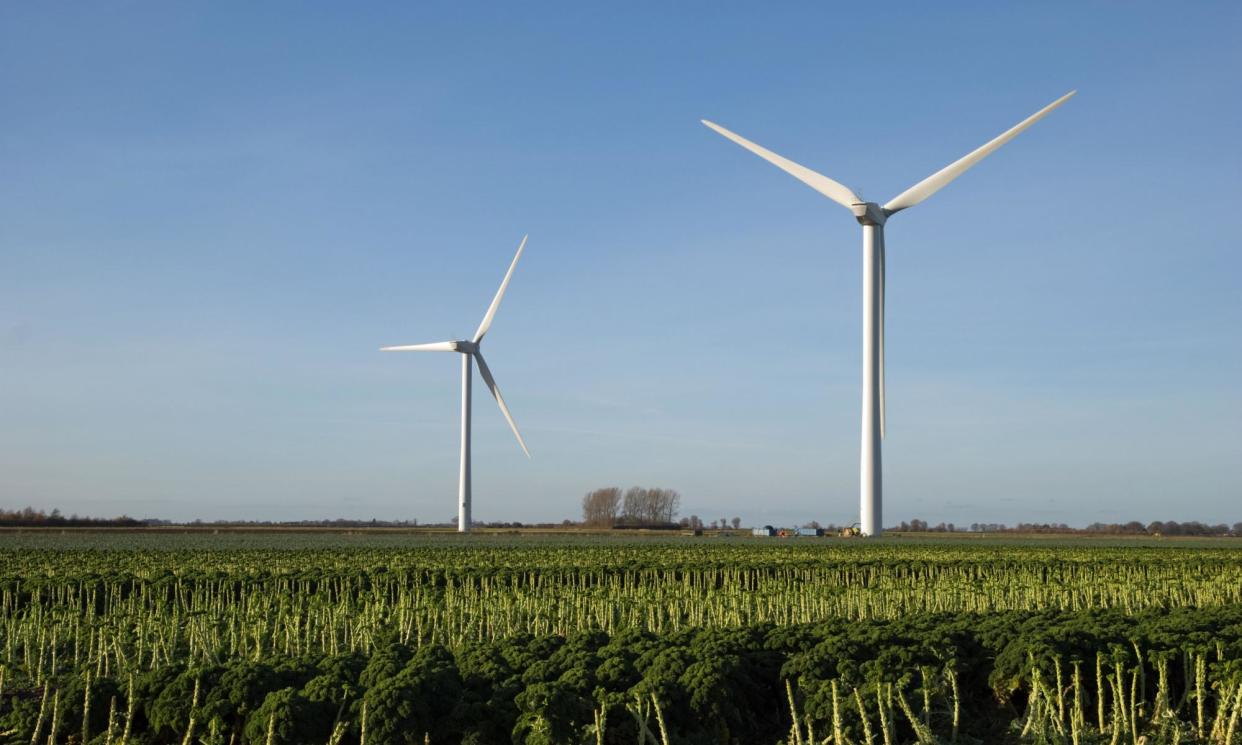Wind turbines generate more than half of UK’s electricity due to Storm Pia

The blustery weather brought by Storm Pia has helped Britain’s windfarms set a new clean energy record, with wind turbines generating more than half of the country’s electricity.
Windfarms generated 21.8 gigawatts (GW) of electricity between 8am and 8.30am on Thursday, according to RenewableUK, a not-for-profit renewable energy trade association, citing figures from National Grid’s electricity system operator (ESO).
This beat the previous record of 21.6GW set on 10 January. Wind generated 56% of Britain’s electricity, although this fell short of the record percentage of electricity generated from wind in a half-hour period, which was 69% on 19 November this year.
Dan McGrail, the chief executive of RenewableUK, said: “Setting a new wind energy record is a great achievement to celebrate during this festive period. Wind power is taking centre stage in our modern clean energy mix, strengthening our energy security and keeping Britain powered up at the coldest, darkest time of the year.”
Storm Pia has caused disruption across the UK, with gusts of up to 80mph in northern Britain blowing trees across rail lines.
The news came as Germany’s RWE agreed to buy a vast collection of North Sea wind projects from Swedish power company Vattenfall for £963m. In July, Vattenfall halted work on the 1.4GW Norfolk Boreas offshore wind project in the North Sea, citing higher costs and “challenging market conditions”.
RWE said it would buy the Norfolk Zone – three fully consented wind farms comprising Norfolk Boreas, Norfolk Vanguard West and Norfolk Vanguard East.
One of the largest offshore wind developments in the world, it will eventually have a total capacity of 4.2GW, enough to power 4m homes.
On Wednesday the Danish renewable energy firm Ørsted decided to push ahead with plans to build the world’s biggest windfarm off the coast of Norfolk.
It made a final investment decision on the Hornsea 3 project off Britain’s coast, which will have capacity to power more than 3.3m homes and is expected to cost 70bn-75bn Danish kroner (£8.1bn-£8.7bn). It is due to be completed by the end of 2027.
Related: ‘Biggest clean energy disaster in years’: UK auction secures no offshore windfarms
The future of the project had been uncertain after Ørsted ditched plans to build windfarms off the US coast amid surging costs for the global wind industry from rising interest rates, steel prices and wages.
McGrail said: “In the new year, the renewable energy industry will be working closely with the government to ensure that we maximise investment in new projects, most critically through the next auction for new clean energy projects, to lower everyone’s energy bills and get us to net zero as fast as possible.”
He called on ministers to be “ambitious” when they set out new parameters in March for next summer’s auction, which he hopes will secure a record amount of new renewable energy capacity and boost jobs in the sector.
The last offshore wind auction in September did not attract any bids, as the price for energy offered to developers had not taken account of high inflation in their costs. Industry insiders said “disastrous” handling by the government had created a big shortfall in future renewable energy.


